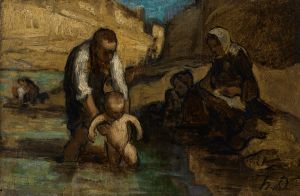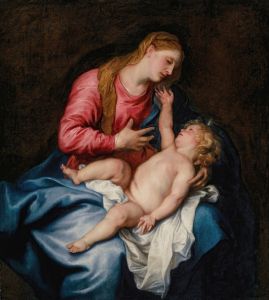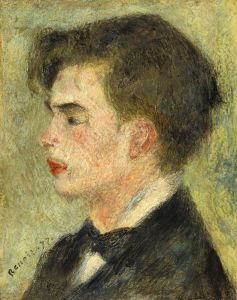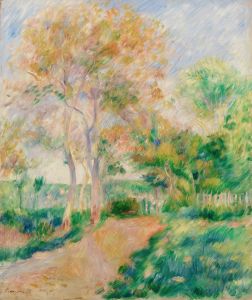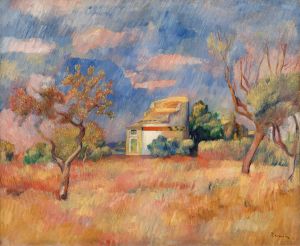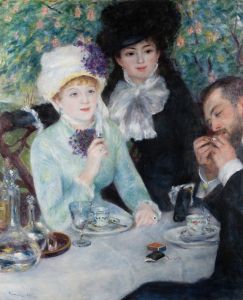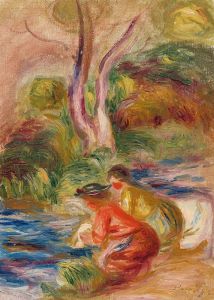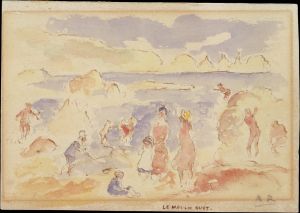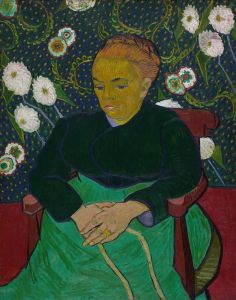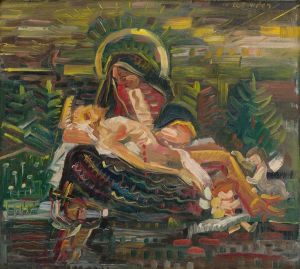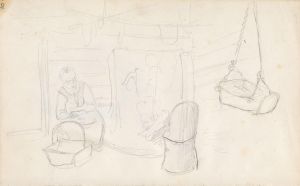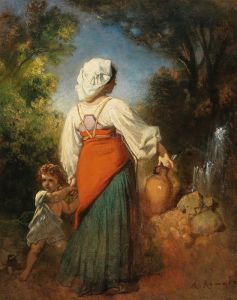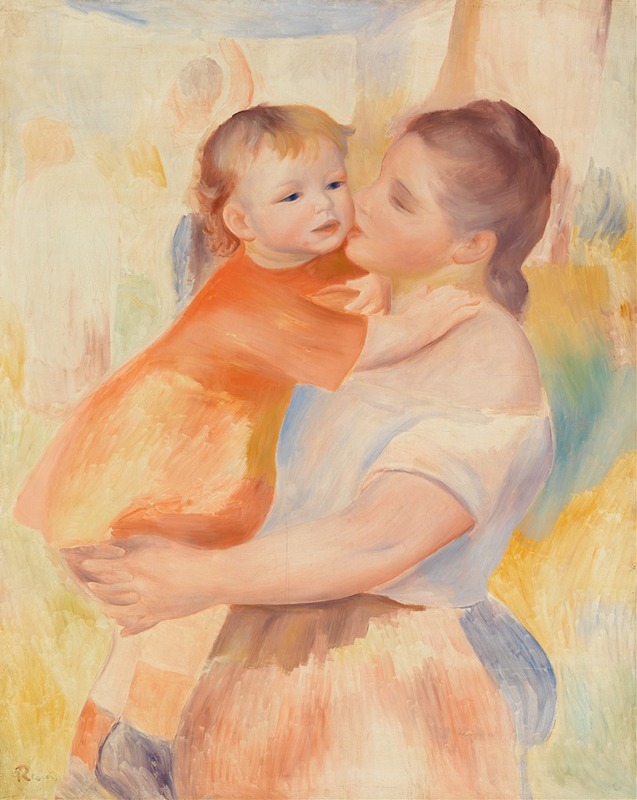
Washerwoman and Child
A hand-painted replica of Pierre-Auguste Renoir’s masterpiece Washerwoman and Child, meticulously crafted by professional artists to capture the true essence of the original. Each piece is created with museum-quality canvas and rare mineral pigments, carefully painted by experienced artists with delicate brushstrokes and rich, layered colors to perfectly recreate the texture of the original artwork. Unlike machine-printed reproductions, this hand-painted version brings the painting to life, infused with the artist’s emotions and skill in every stroke. Whether for personal collection or home decoration, it instantly elevates the artistic atmosphere of any space.
Pierre-Auguste Renoir, a leading figure in the Impressionist movement, is renowned for his vibrant light and saturated color, often focusing on people in intimate and candid compositions. One of his lesser-known works, "Washerwoman and Child," exemplifies his ability to capture everyday life with warmth and sensitivity.
"Washerwoman and Child" is an oil painting that showcases Renoir's interest in domestic scenes and his skill in portraying human figures. The painting depicts a washerwoman, a common subject in 19th-century art, engaged in her daily labor, accompanied by a child. This theme reflects Renoir's fascination with the working class and his desire to depict their lives with dignity and respect. The washerwoman, a symbol of industriousness and maternal care, is portrayed with a sense of grace and tenderness, characteristics often found in Renoir's depictions of women.
Renoir's technique in this painting is indicative of his Impressionist style, characterized by loose brushwork and an emphasis on the effects of light. The composition is likely to feature soft, diffused lighting, which enhances the intimate atmosphere of the scene. The colors are typically vibrant yet harmonious, a hallmark of Renoir's palette, which often included warm tones and subtle contrasts to create depth and vitality.
The setting of "Washerwoman and Child" is likely a rural or suburban environment, as Renoir often drew inspiration from the countryside around Paris. This setting not only provides a picturesque backdrop but also situates the figures in a context that emphasizes their connection to nature and the simplicity of rural life. The choice of subject and setting reflects Renoir's broader artistic goals of capturing the beauty and authenticity of everyday moments.
Renoir's interest in depicting washerwomen can be seen in several of his works, as this subject allowed him to explore themes of labor, femininity, and domesticity. His portrayal of these figures is often imbued with a sense of admiration and empathy, highlighting the dignity of their work and their integral role in society. This approach aligns with the broader Impressionist movement's focus on modern life and its rejection of historical and mythological subjects in favor of contemporary themes.
While specific details about "Washerwoman and Child" are limited, the painting fits within Renoir's broader oeuvre, which frequently celebrated the beauty of ordinary life and the human form. His works are noted for their joyful depiction of social interactions and their ability to convey a sense of immediacy and emotion. Renoir's legacy as an artist is marked by his contribution to the Impressionist movement and his influence on subsequent generations of artists who sought to capture the fleeting moments of modern life with similar sensitivity and skill.
In summary, "Washerwoman and Child" by Pierre-Auguste Renoir is a testament to the artist's ability to portray everyday scenes with warmth and empathy. Through his Impressionist technique and choice of subject matter, Renoir offers a glimpse into the lives of the working class, celebrating their resilience and humanity.





